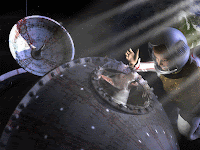Paisley: An Ancient Swirling Pattern from a Town With Celibate Brythonic Origins?
Or a Green Summer Leafy Vegetable?
from our National Geographic Consultant, George Carrey-Urdu in Urkanistan
Well, for a start, why celibate?

Hmm --- my personal feeling is that paisley (the design) is what people who are inordinately attractive to the opposite sex wear, to ameliorate the possibility of them reproducing.
That is, to me a 'paisley' design on any item of clothing - especially if it has the colour green, or red, or yellow, or blue - is the ultimate anti-aphrodisiac. Unless of course, you were into "gamete fusion" in the swinging sixties - then paisley is 'hot' - especially when combined with LSD, mari-juana and BEX.
Meanwhile, back in the swinging 400's (AD) in Britain just south of
the Firth of Forth, apppeared a group of languages called the
"Brythonic languages" - which eventually evolved into the Welsh,
Cornish, Breton, and Cumbric dialects.

"So," you ask, "what's that have to do with Pailsey?"
Well, it just so happens that Pailsey means paddock in the Brythonic lingo.
So if someone comes up to you and asks you in Brythonic, "Where are my cows? (Tá áit mo bha?). A great answer would be "In the Paisley." (sa Pailsey) - assuming the cows were actually in the "Pailsey'.
"Okay, okay, but what's this have to do with 'pailsey' design?"

Well, if you've researched this weeks illustration prompt as I have, the first thing you would have googled is 'paisley' (well I actually googled 'parsley' because of my dislexia -which made me was very confused for a while).
If so, you probably already know that the paisley design originally came from Titszxatasgan in Persia where it was known as "mankolam". For some reason, historical design kind of people think paisley designs from Titszxatasgan resemble a mango.

Consequently they relate the paisley pattern to Hinduism (the
Kalasha – coconut circled by mango leaves on a pot - is one of the ten most important symbols in Hinduism.) Wow, what a jump in thinking.
To me, as a post modern abstract expressionist, I find paisley designs look like, not so much a bunch of mangoes, but a bunch of dried eggplants that have been flattened by a bulldozer then ornamented with a pattern of flowers sprinkled artfully over the remains, the whole lot being coloured in Neo Magic Textas by a colour blind chrom-satyriasis, (from the Greek σατυρίασις, from σάτυρος - meaning an unatural excess of colour-lust).
Leaving the Hindus aside and f

ast forwarding to the 17th century,
when the East India Company bought paisley and other Indian
patterns into Europe. There they became so popular that the poor starving Capatalistic East India Company was unable to import enough to meet the demand.
Hence, on 7th May 1640, smart locals in Marseilles hopped on the 'paisley' bandwagon and began to mass-produce the patterns via early textile printing processes. England, then Holland, soon followed (in England it was the House of Lords attempt in population control by way of introducing the "anti-aphrodisiac paisley pattern for poor people act" - AAPPFPPA for short).
So, in keeping with the AAPPFPPA, exactly 100 hundred years later, on 2nd March 1859, the overpopulated Scots stepped into the 'paisley scene.".
Not content to just let their men wear dresses or get slaughtered by the
English at Battle of Culloden, the Scots actually volunteered to make
cloth in paisley design.
Hence, in honour of their sacrifice, the sleepy town of "Swamp-ben-loch" in Scotland was renamed "Pailsey', after Sir Ian Pailsey, who invented the washing machine - and hence made washing garmets like Paisley less of a nightmare for the modern child less woman......
And so history was rewritten on my blog.
Tommorrow I'll tell you how, on the 12th March 1964, the world famous "Chinese Gosberry" was grabbed by three wily New Zealanders, who after a remarkable marketing strategy which lasted fourteen days and fourteen nights, released it back into the world as --- "The Kiwi."
Stay tuned, and thank you for looking. Sorry about the formatting.





































